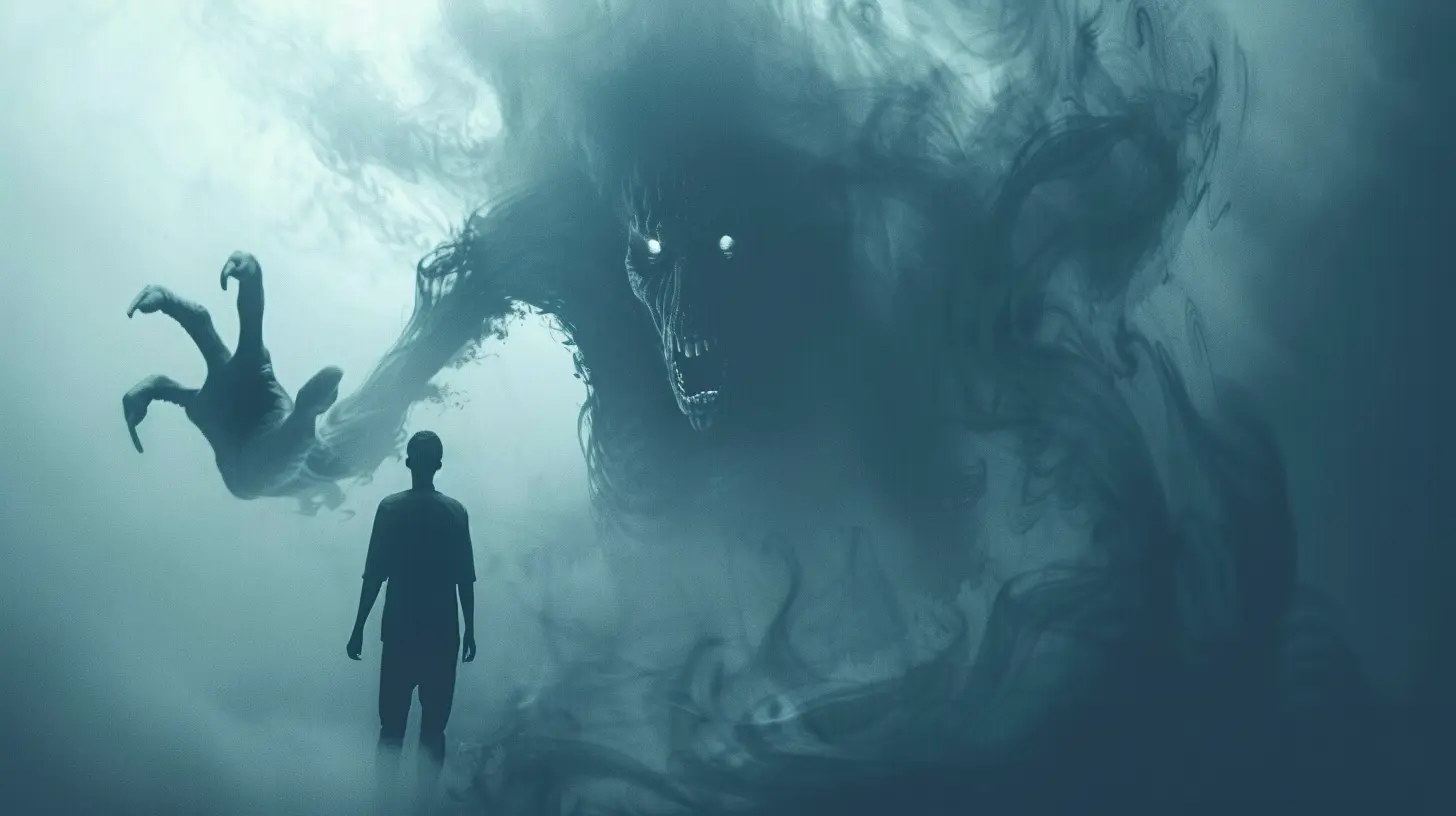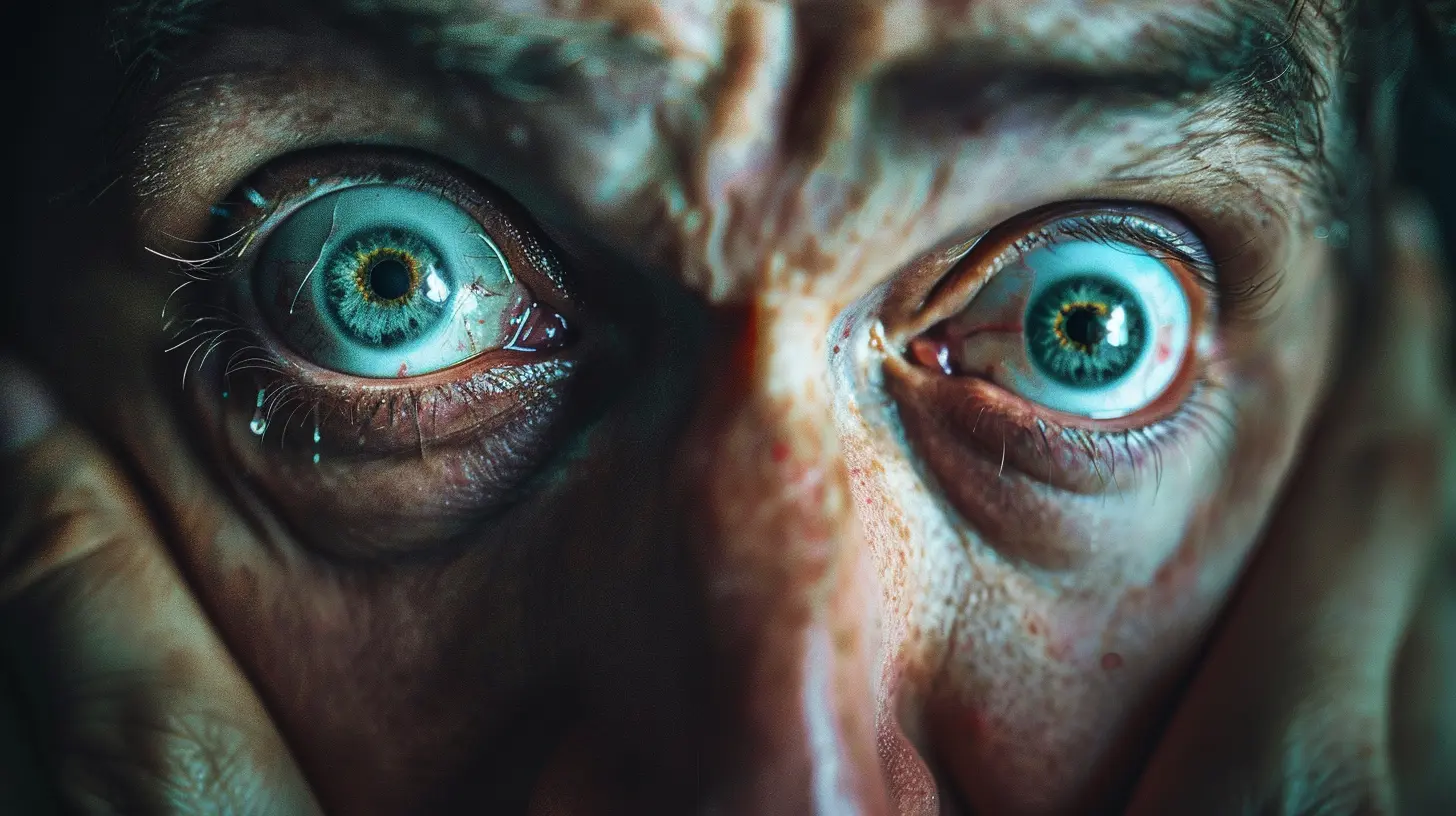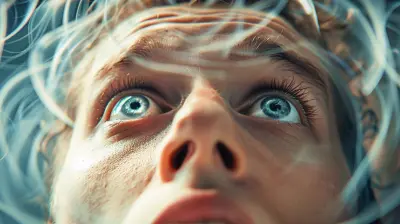The Evolutionary Origins of Phobias: Are We Hardwired for Fear?
24 April 2025
Fear is an emotion we all know too well. Whether it’s the unsettling feeling that crawls up your spine during a scary movie or the paralyzing terror that grips you when you see a spider skittering across the floor, fear is a deeply ingrained part of the human experience. But have you ever stopped to wonder why? Why do some of us have irrational fears of harmless things? Why does the mere sight of a snake or the thought of public speaking make us break into cold sweats?
Well, it turns out that fear, particularly irrational fear, may not be as irrational as it seems. In fact, many of our most common phobias can be traced back to our evolutionary past. Yep, that's right—our brains are hardwired to be afraid. But why? Let's dive deeper into the evolutionary origins of phobias and explore whether we are truly hardwired for fear.

What Is a Phobia?
Before we get into why we develop phobias, let’s first define what a phobia actually is. A phobia is an intense, irrational fear of a specific object, situation, or activity. The keyword here is irrational. It’s not just your everyday fear of something dangerous, like the fear of getting too close to the edge of a cliff. A phobia goes beyond that. It’s when your fear is so overpowering that it disrupts your life.For example, someone with arachnophobia (the fear of spiders) might avoid going into their basement altogether, even though they know deep down that the likelihood of encountering a venomous spider is slim to none. Phobias can cause people to alter their behavior drastically, and in many cases, the object of fear poses no real threat. But where do these irrational fears come from?

The Role of Evolution in Fear
To understand why we have phobias, we need to take a look back—way back—to the time of our ancient ancestors. Long before we had smartphones and social media, humans lived in environments teeming with real, life-threatening dangers. Imagine being a caveman or cavewoman for a moment. Every day, you had to worry about predators lurking in the bushes, poisonous snakes hiding in the grass, and dangerous heights that could lead to fatal falls.In such a world, fear was a survival tool. Those who were quick to detect danger and respond with fear were more likely to survive and pass on their genes. Think about it: If you were fearless and wandered too close to a lion or snake, your odds of surviving were pretty low. But if you had a healthy fear of things like heights, snakes, or dark caves, you were more likely to avoid dangerous situations and live to fight another day.
So, fear evolved as a protective mechanism. Our ancestors who were more fearful were better equipped to survive in a world full of dangers. But what about phobias? Why do some fears seem so disproportionate to the actual threat?

The Evolution of Phobias: A Fear of the Unknown
Phobias can be seen as an exaggerated form of this survival mechanism. While fear helped our ancestors avoid danger, it’s possible that some of these survival instincts have been passed down to us in the form of phobias. Specifically, we may have inherited a predisposition to develop certain fears that were once crucial for survival.Let’s break down a few common phobias and see how they might have been useful to our ancestors:
1. Arachnophobia (Fear of Spiders)
Spiders, especially venomous ones, posed a real threat to early humans. A bite from a venomous spider could lead to serious illness or even death. So, it makes sense that over time, humans who were more cautious and had an innate fear of spiders were more likely to survive. Today, this fear persists as arachnophobia, even though most spiders we encounter are harmless.2. Ophidiophobia (Fear of Snakes)
Similarly, snakes have been a deadly threat to humans throughout history. In fact, some research suggests that humans are particularly good at spotting snakes in their environment—our brains are wired to detect this threat. This heightened awareness of snakes, combined with the real danger they posed, likely contributed to the development of ophidiophobia.3. Acrophobia (Fear of Heights)
Falling from a great height is an obvious danger. Our ancestors who were more cautious when it came to traversing cliffs or climbing trees were more likely to avoid fatal falls. Acrophobia, or the fear of heights, might be an exaggerated version of this ancient survival instinct.4. Nyctophobia (Fear of the Dark)
The dark was another dangerous place for our ancestors. Predators often hunted at night, and without modern lighting, humans were essentially blind in the dark. Fear of the dark, or nyctophobia, could have been an adaptive trait that kept early humans close to their shelters, reducing their risk of being attacked by nocturnal predators.
Are We Still Hardwired for Fear Today?
Now, you might be thinking, "But we don’t live in those dangerous environments anymore! Why haven’t these fears faded away?" The thing is, while our environment has changed drastically, our brains haven’t caught up yet. Evolution moves slowly, and the human brain is still wired much the same way it was thousands of years ago. This means that while we no longer face the same daily threats as our ancestors, the mechanisms that helped them survive are still hardwired into us.That’s why you might feel an intense fear of something that’s relatively harmless in the modern world—like a spider in your living room or standing on the edge of a tall building. Your brain is still reacting as though you’re in a life-or-death situation, even though the actual threat is minimal.
Learned Fears vs. Innate Fears
It’s important to note that not all phobias are necessarily the result of evolution. Some fears are learned through experience. For example, if a child has a traumatic experience with a dog, they might develop cynophobia (fear of dogs), even though dogs weren’t a significant threat to our ancestors.The distinction between learned fears and innate fears is crucial. While many common phobias, like those of snakes, spiders, or heights, may have evolutionary roots, others are the result of personal experiences or cultural influences.
Why Do Some People Develop Phobias While Others Don’t?
If phobias can be traced back to evolution, why don’t we all develop them? Why can one person be terrified of flying while another person loves the thrill of takeoff? The answer likely lies in a combination of genetics, brain chemistry, and individual experiences.1. Genetics
Research suggests that phobias can run in families. If one of your parents has a phobia, you’re more likely to develop one as well. This points to a genetic component in the development of phobias. Some individuals may be more predisposed to fear due to their genetic makeup.2. Brain Chemistry
The amygdala, a small, almond-shaped part of the brain, plays a key role in processing fear. In people with phobias, the amygdala may be more sensitive, leading to heightened fear responses. This heightened sensitivity could explain why some people develop phobias while others don’t.3. Experiences
As mentioned earlier, personal experiences can also play a role in the development of phobias. A traumatic experience or even observing someone else’s fearful reaction can lead to the development of a phobia. Cultural factors may also influence which fears are more common in certain societies.How Phobias Affect Our Modern Lives
In today’s world, phobias can be more of a hindrance than a help. While fear once protected us from life-threatening dangers, phobias can interfere with our daily lives in ways that aren’t always rational. For example, someone with a fear of flying might avoid traveling altogether, even though air travel is statistically one of the safest modes of transportation.Phobias can also take a toll on mental health, leading to anxiety and avoidance behaviors. Fortunately, many people find relief through treatments like cognitive-behavioral therapy (CBT), exposure therapy, and, in some cases, medication.
Conclusion: Are We Hardwired for Fear?
So, are we hardwired for fear? In many ways, yes. Our brains have evolved to prioritize survival, and fear is a crucial part of that equation. While phobias may seem irrational in our modern world, they likely have deep evolutionary roots that once helped our ancestors avoid danger.That being said, not all fears are innate. Some are learned through experience, and many phobias can be managed with the right treatment. So, the next time you feel that creeping sense of dread when you see a spider or look down from a tall building, remember that your brain is just doing its best to keep you safe—even if the threat isn’t as real as it once was.
all images in this post were generated using AI tools
Category:
PhobiasAuthor:

Matilda Whitley
Discussion
rate this article
4 comments
Zephyrwind Kane
Fascinating insights! Understanding our evolutionary roots of phobias sheds light on why fear responses remain so powerful today.
May 12, 2025 at 4:51 PM

Matilda Whitley
Thank you! It's intriguing how our evolutionary past continues to shape our modern fears and responses.
Ariana Long
This insightful article beautifully explores how our evolutionary past shapes modern fears, reminding us of our shared human experience.
May 1, 2025 at 4:27 AM

Matilda Whitley
Thank you for your kind words! I'm glad you found the article insightful and resonant. Our evolutionary history truly plays a crucial role in shaping our fears.
Renata Foster
Fascinating insights into our fears!
April 26, 2025 at 4:35 PM

Matilda Whitley
Thank you! I'm glad you found the insights intriguing!
Zadie Hardy
This exploration of the evolutionary roots of phobias highlights our innate responses to danger. Understanding these deep-seated fears not only sheds light on human behavior but also emphasizes the importance of addressing and managing our anxieties in today's world.
April 26, 2025 at 3:40 AM

Matilda Whitley
Thank you for your insightful comment! Understanding our evolutionary roots helps us better manage contemporary anxieties and fears.



